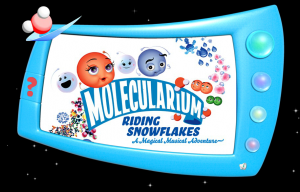I’ve just booked to attend another conference next week, so I officially have three conferences that I need to follow up on so that I can make sure that I don’t forget about the ideas and research that I learned about.
I’m going to start by writing about a presentation I attended at ASERA given by Cheryl Jakab at the University of Melbourne. Cheryl talked about her findings from working with three children to explore their scientific ideas of matter using simulations. I really liked the way Cheryl grounded her work in the following ideas:
- ICT as possible grounding of meaning in action
- ICT as capable of changing learnabilities of science content.
I really liked this quote from her presentation: “By changing the codes necessary for approaching a problem, a good portion of the task may be changed. In this way, representational media can contribute to the re-organisation of thought”. (Kritt & Winegar, 2007, p. 10). This concept really makes me think about how ICT and technology in general, social media specifically, has re-organized the way we store and communicate information. It has been claimed that one of the essential skills of the future is not to know particular information but to know where it is stored, or who you can ask to find out!
Cheryl examined how three very different children interacted with a molecule building simulation called Molecularium. All three children were able to demonstrate that they had a better understanding of scientific ideas about matter after moving through the levels of the game like environment. The most interesting result for me was that while working with the simulation, students asked questions that demonstrated that the simulation enabled more sophisticated scientific thinking. Cheryl summarized her findings into the following affordances for using simulations to encounter new content knowledge as thinking tools:
All three children were able to demonstrate that they had a better understanding of scientific ideas about matter after moving through the levels of the game like environment. The most interesting result for me was that while working with the simulation, students asked questions that demonstrated that the simulation enabled more sophisticated scientific thinking. Cheryl summarized her findings into the following affordances for using simulations to encounter new content knowledge as thinking tools:
Enabling elements:
- provision of representation for appropriation/domestication
- ontological engines
- game-like nature
- rehearsal/practice/know how
Constraining/Human elements:
- limits possibility
- directs attention in desirable (scientific) way of thinking
- explanatory power of scientific model
- enable exploration of socioscientific issues using scientific concept
Likely these ideas need a little more unpacking to be digested by the non academic reader, but I think the take home message is that simulations can be used to reframe what is ‘learnable’. The discussion that ensued after the talk focussed around the challenges of the current Australian curriculum where teachers need to be able to teach about matter and substances without referring to molecules and atoms. It was recognized that in today’s everyday vernacular terms such as H2O and CO2 are known, and understood, by children much younger than the curriculum takes into account.
I also need to thank Cheryl for this excellent reference to a literature review on current research in using simulations in science education. [Smetana, L.K., & Bell, R.L. (2012). Computer simulations to support science instruction and learning: A critical review of the literature. International Journal of Science Education, 34(9), 1337-1370.] I will be looking it up soon to support a paper that I’m working on with Cedric on multi-modal representations of a simulations of the Bohr Model using complexity theory.
I hope that I’ve represented Cheryl’s work accurately. If you’re interested in it, I’m sure you can email her at cjakab @ student.unimelb.edu.au.
